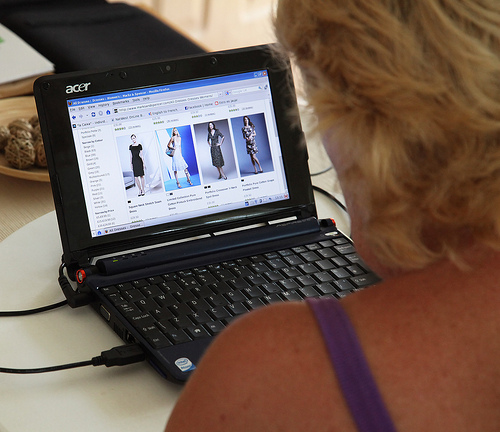Written by Fernando Maciá
Índice
- 1) Present products as unique
- 2) Try to maintain a wide assortment of products published on the portal.
- 3) Do not build your product page with pop-ups.
- 4) Make a product card crawlable by search engines and not only by humans: Design a sitemap.
- 5) Use names and descriptive wording to showcase your products.
- 6) Inserting links to other product pages: the cross-visit
- 7) Creating community through content
- 8) Taking note of changes
Learn the guidelines you need to know to choose the right Internet marketing tactic for your Web site. Learn to assess the strengths and weaknesses of banner advertising, pay-per-click search engine tools, natural search engine optimization and email marketing campaigns.
Through search engines 90% of our visits can arrive at a very low cost compared to other channels of Web traffic attraction.
80% of the visitors to an online store may give up their intention to buy if they cannot easily find the product they are looking for. Find out some recommendations for your online store to get more visitors likely to become customers.
The stores that sell on the Internet are not the prettiest or the ones with the best design. Other factors have made many online stores profitable. The usability added to the positioning in search engines is today the best 24-hour salesman that an online store can have.
We will now review some recommendations to make our online store more attractive to users and search engines:
1) Present products as unique
As we publish more content, we will have more possibilities of being positioned in the search engines for a greater number of keywords related to our activity and products. Every new page on an e-commerce portal is a salesperson that we put on the street. For this reason, we must apply strategies that involve the generation of new content.
Many online stores tend to group several products on the same Web page. For example, some computer equipment sales portals group all printers on a single page when it would be optimal to create a separate page for “laser printer brand Y model 1020”, another page for “photo laser printer brand X model 2030” and so on.
The more unique pages with unique product information, the more pages we are ranking in search engines.
Many search engine users type in phrases such as “buy XXX brand photo printer” or “YYYY model 1030 inkjet printers”. At the programming level, in order to make a product page unique, try to write the “title” tag and the “description” meta tag of each of the pages of the product page differently. Each page should have these tags with independent wording.
2) Try to maintain a wide assortment of products published on the portal.
Showing few products in our portal generates the weakness, on the one hand, of competing with few pages in the search engines and on the other hand, causing the same effect as when we go to a recently inaugurated shopping mall and we see that only half of the stores are open. It doesn’t encourage us to visit it again.
Make sure your portal maintains a large number of published product pages to generate interest for repeat visits.
3) Do not build your product page with pop-ups.
A frequent error in online stores consists of programming the product information in a pop-up page, i.e. a page that opens in a new window by invoking an instruction programmed with javascript. This technique usually aims to allow portal users to compare several products at the same time. However, search engines are currently unable to index pop-up formatted pages. Since pop-up programming is generated through a javascript link, search engine robots cannot follow this type of link. The recommendation to follow is that each product page should be a separate HTML page with its own individual address or URL.
4) Make a product card crawlable by search engines and not only by humans: Design a sitemap.
Most online stores have as the only way to reach their product sheets the search forms or internal search engines found on the home page. These forms cause a user to land on a specific product listing page. However, search engine robots do not know how to use these forms, so they cannot crawl the Web pages related to the product sheets.
It is recommended then, to create a site map where text links to each of the articles that the e-commerce portal has are listed. In this way, in addition to providing the user with an alternative way to find the products, we are creating a secure bridge for search engines to find all the product pages of the site.
5) Use names and descriptive wording to showcase your products.
There are many marketing theories that recommend us to baptize our products with proper names to enhance branding. In the case of companies that are not very well known, it is recommended to position ourselves on the Web through familiar or descriptive names instead of positioning ourselves with metaphorical names.
For example, if our portal sells “socks for diabetics” the best description to place in the product sheet will be precisely “socks for diabetics” and not “fabrics for the comfort of our steps”. Additionally, if the proper name of the product is “dreams feet”, we should not overuse that name to describe the product. Very few Internet users will search for a diabetic sock with the metaphorical phrase “comfort fabrics steps” or “dreams feet” when looking for a diabetic sock. In contrast, search engine users tend to place more descriptive phrases such as “diabetic winter socks” or “diabetic plus size socks”, etc.
6) Inserting links to other product pages: the cross-visit
The more pages viewed in an online store, the greater the possibility of generating sales.
A product listing page can also be the page that recommends the sale of another similar product. Large e-commerce portals tend to place links at the end of a product description. These links are usually “top 10 best selling products in this category”, “those who have bought this product have also bought this other product”, “other similar products”, etc. Besides being an excellent tool to generate more page views, it is an additional factor that search engines take into account when indexing a Web page. As mentioned above, search engine robots navigate from one page to another through text links, so by placing links to other product pages we are ensuring greater indexability of the website’s product portfolio.
7) Creating community through content
The greater the amount of content, the greater the visibility in search engines for an additional keyword extension. The purchase decision for a product can be closed with the inclusion of additional contents to reduce uncertainty What can differentiate the information we find about a product in a traditional physical store from that found in an online store? The advice and opinions of people who have already bought the product.
For example, tips on how to buy a certain product, tips on how to use a product, etc.The content, a forum of opinions about products, a ranking of products created from the votes of the buyers, etc., are contents that create links between the visitor and the virtual store. How many people look for information before buying a product? If you want to buy a flat screen TV, wouldn’t you like someone to tell you in detail what is the difference between Plasma TVs and LCD TVs?
8) Taking note of changes
These suggestions presented in the article are the product of practical cases measured in different e-commerce portals, which suggests that before applying these changes we must have a way to measure their effects. Having a good system of Web traffic statistics at hand to measure little by little the improvements in our virtual store will be the scorecard that will let us know that things are on the right track.




